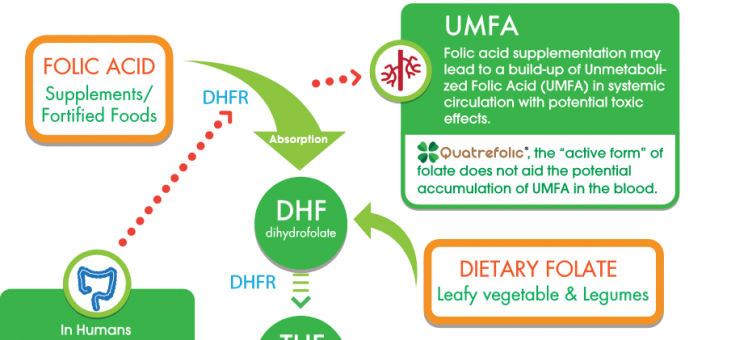Gnosis launches chart to explain folic acid doses to consumers

According to Gnosis, the chart “[explains] in the right way the importance of the right folate supplementation.”
The company explained that they noticed rising consumer concern about the potential implications and adverse effects of folic acid in high doses, especially those coming from fortified foods such as pasta and baked goods, when the consumer isn’t aware of the amount of folic acid he or she is taking in.
“The target audience [for our chart] are both end-users and end-manufacturers,” Lorena Carboni, Product Support Specialist at Gnosis S.p.A., told NutraIngredients-USA. “The debate about folic acid supplementation and its food fortification is central for both groups because of the increasing awareness about potential toxic effects and the related perception of the producers of finished products that would like to meet the new needs of people and to answer to existing concerns.”
Folate and folic acid aren’t the same
Gnosis developed the flowchart as part of its campaign to educate consumers and manufacturers about its Quatrefolic product, which the company said is a “biologically active form of folate.” The water-soluble B vitamin is popularly taken to prevent and treat low blood levels of folate.
“While folic acid is often considered to be a supplemental form of folate, there is an important distinction between these two different compounds,” Carboni said. She added that if most of an individual’s folate consumption is coming from folic acid supplements rather than from food, “people may still be gravely folate deficient because of the big variations in how efficiently folic acid is converted to the bioactive form in different people.”
Consumer concerns
At the moment, potential “overdosing” of unmetabolized folic acid (UMFA) due to fortification is under strict evaluation by the scientific community, the spokesperson said.
Recent studies have confirmed that UMFA is associated with the reduction of the immune system’s capacity to kill off malignant or pre-malignant cells, as well as the acceleration of cognitive decline and anemia in the elderly with low levels of vitamin B12.
“[This is a] possible overdose due to uncontrolled folic acid intake. The threshold of ingestion of folic acid that leads to the direct appearance of UMFA in the plasma, results to be highest than 200-300 μg/daily intake,” the spokesperson said. “The consumption of [the] highest dosage of synthetic folic acid results in absorption of unreduced folic acid, which may interfere with folate metabolism for a period of years.”
Thus, by releasing an easy-to-read flowchart containing the metabolic pathway of folate, the company hopes misconceptions and misunderstandings about folic acid can be straightened out. “The understanding of the folate world by physicians, end-users and producers of dietary supplements is one of our first target, to provide a tangible benefit for consumers,” she said.
Too simple, but touches key points
According to Dr. Robert Verkerk, Executive and Scientific Director of the Alliance for Natural Health, there are some over-simplifications in the Gnosis chart, especially when it comes to the complex trafficking that occurs between different folate pools, such as those in the dihydrofolate and tetrahydrofolate forms," he said.
But he added that the chart's key point is entirely valid: "If a person takes too much folic acid, which might result from consumption of high dose folic acid supplements as well as fortified foods, they are at potential risk of suffering the effects of excessive levels of unmetabolised folic acid - or UMFA - in their bodies and tissues."
He also added that, though the science still isn't conclusive, some studies have observed a link between excessive levels of circulating folic acid to an increased rate of some cancers. "While we all benefit from getting folate in dark green-leaved veg like kale and spinach, as well as from other foods like French beans and oranges, natural folate is not very stable and typically only around half of the amount ingested is absorbed. This is where reduced folate supplements that deliver folate in the bioactive form, 5-MTHF, can be very useful," Verkerk said.
To view the chart in PDF form, click below:
















